Charles Harlan – Menhirs
Charles Harlan
Menhirs
| (Past) | 25.02.201625.02.16 — 02.04.201602.04.16 |
|---|---|
| (Gallery) | Rue de Livourne 32 Livornostraat |
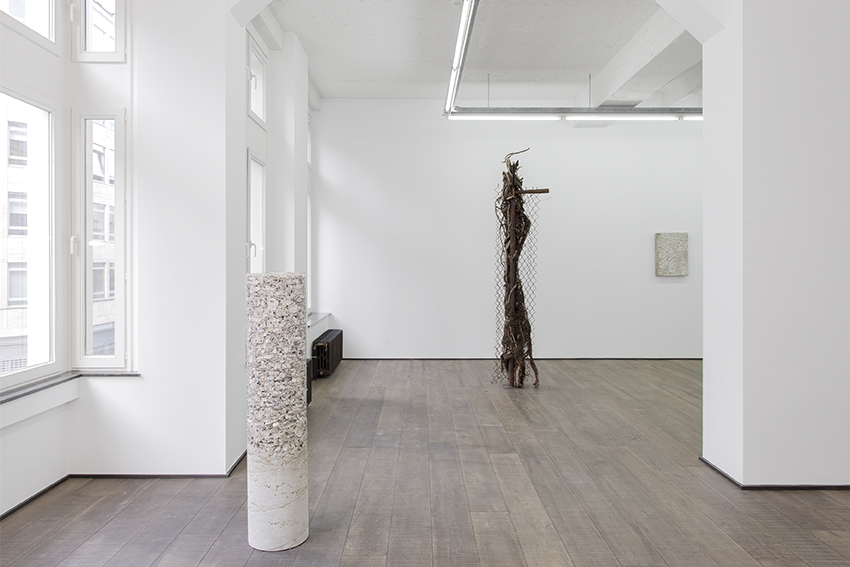
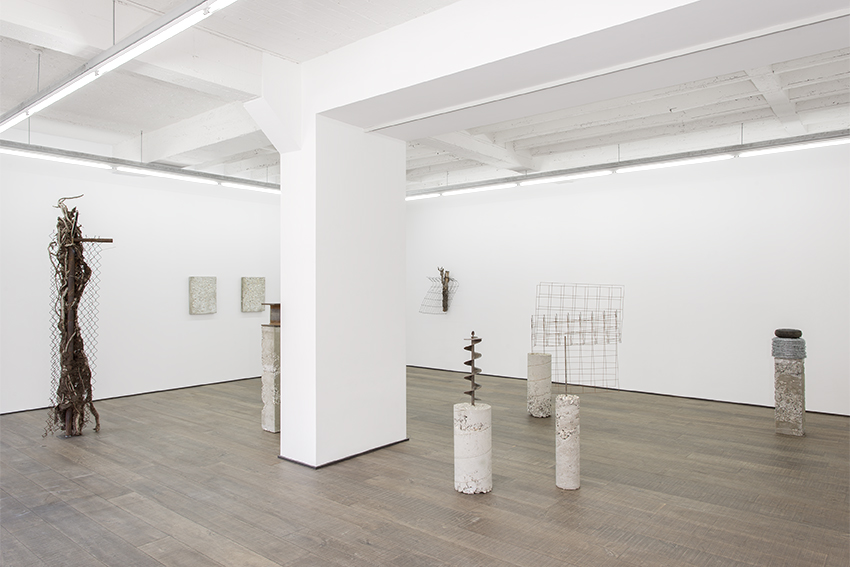
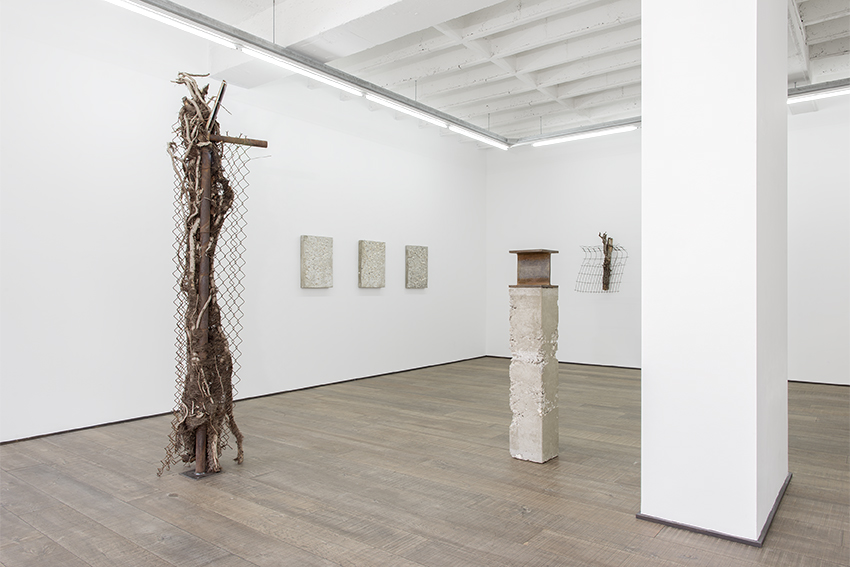



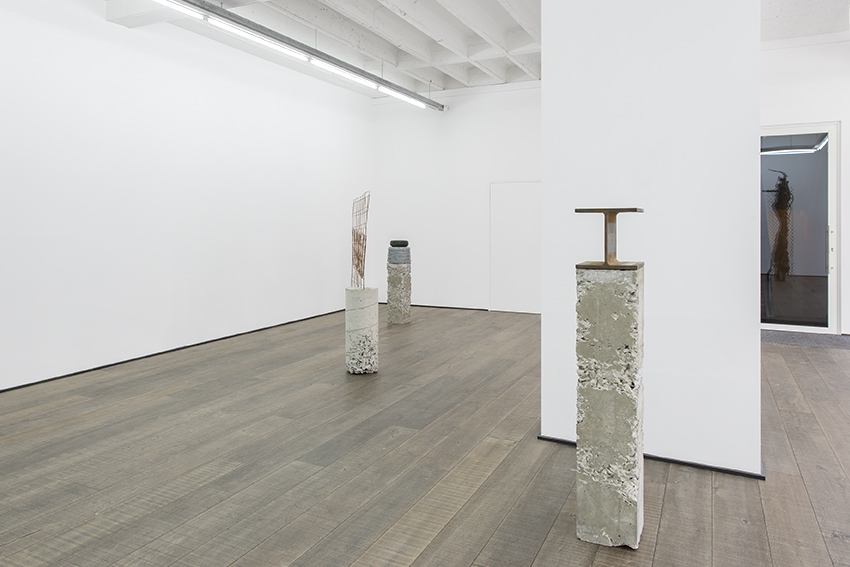
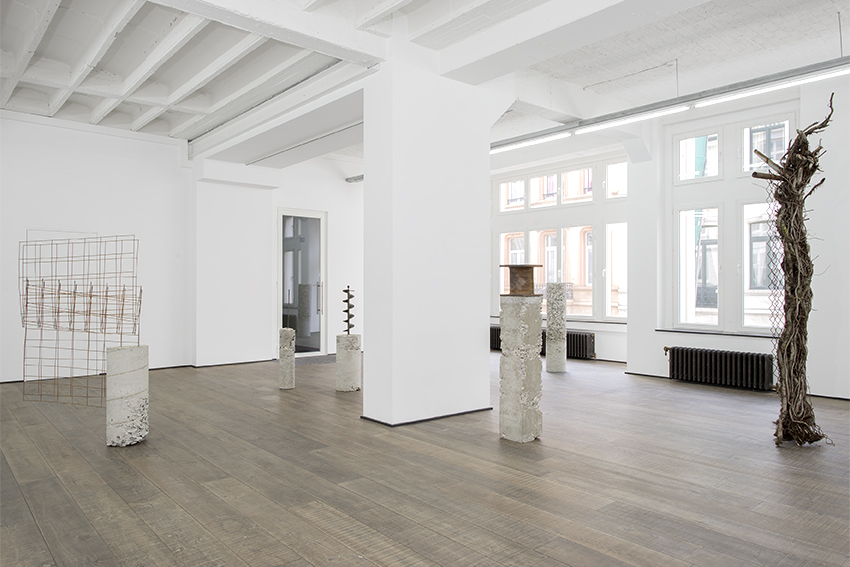
(01/08)Exhibition views
Menhirs
One weekend last Fall, Charles Harlan drove to Dogtown in St. Louis in an effort to retrieve a section of a tree that had grown into a chain-link fence—a found object that would become the centrepiece of his first solo exhibition at Galerie Rodolphe Janssen. Like a boa constrictor creeping toward and consuming unsuspecting prey, nature is relentless in its need to grow, to subsume anything in its path. For trees, the man-made obstructions are meaningless. A tree will simply continue.
The resulting sculpture, Tree, 2015, is pillar-like in form, standing almost nine feet tall. And although nature and humanity seem to be at odds here, this hybrid object is neither completely natural nor manmade. For the artist, the form brought to mind the earliest human erections—menhirs found throughout neolithic Africa and Europe. The earthworks seem to embody this ambiguous and hybrid form in a similar fashion. Natural materials mysteriously hoisted into position at some remote point in history, they have become to the modern mind almost part of the landscape.
As he continued to explore the concept of the menhir through his Tree pieces, other more modern pillars began to make their way into the work for this exhibition. One, in the form of the American industrial menhir—the skyscraper. Harlan came to incorporate more building materials into his minimalist sculptures—an auger, an l-beam, rebar—materials emblematic of American Steel, the great industry that has made so many skyscrapers and millionaires. Supporting these bits of metal are pillars cast in tabby concrete, once a prevalent building material in his native Georgia made predominantly using oyster shells. As a building material tabby is also a hybrid, consisting of both the industrial and the natural in its use of shells. Oysters and steel have a shared story, one that sheds light on the lasting strength of the American economy, built on a foundation of exploited labor.
You see, oysters and their middens—mounds of shells found along coastal areas all over the world—are another unassuming marker of civilization: When European settlers colonized the Southeastern United States, these shells were harvested by slaves and burnt down to lime, mixed with sand and water, then poured as concrete. A building material called tabby is the result of this process, widely used to build the coastal architecture of the Antebellum South.
The history of New York City, where Harlan lives and works, can be told through oysters too. New York harbor once held the largest deposits of oysters in the world in the 19th century. Once a working man’s meal, eaten between hoisting steel beams up skyscrapers, the humble oyster would soon become an industrialist’s foreplay. Under the streets of New York lie millions of discarded shells, the fossils of the food that built a city. Like menhirs, those oyster shells are gradually sinking into the earth, absorbed by the world around them and into the strata. Charles Harlan’s sculptures, textured by the shells used as a replacement for gravel in tabby, bear witness to an ancient and enduring process.
